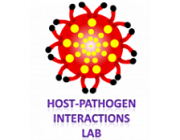Ephrem G Kassa, Zlotkin-Rivkin, Efrat , Friedman, Gil , Ramachandran, Rachana P, Melamed-Book, Naomi , Weiss, Aryeh M, Belenky, Michael , Reichmann, Dana , Breuer, William , Pal, Ritesh Ranjan , Rosenshine, Ilan , Lapierre, Lynne A, Goldenring, James R, and Aroeti, Benjamin . 2019.
“Enteropathogenic Escherichia Coli Remodels Host Endosomes To Promote Endocytic Turnover And Breakdown Of Surface Polarity”. Plos Pathog, 15, 6, Pp. e1007851. doi:10.1371/journal.ppat.1007851.
Abstract Enteropathogenic E. coli (EPEC) is an extracellular diarrheagenic human pathogen which infects the apical plasma membrane of the small intestinal enterocytes. EPEC utilizes a type III secretion system to translocate bacterial effector proteins into its epithelial hosts. This activity, which subverts numerous signaling and membrane trafficking pathways in the infected cells, is thought to contribute to pathogen virulence. The molecular and cellular mechanisms underlying these events are not well understood. We investigated the mode by which EPEC effectors hijack endosomes to modulate endocytosis, recycling and transcytosis in epithelial host cells. To this end, we developed a flow cytometry-based assay and imaging techniques to track endosomal dynamics and membrane cargo trafficking in the infected cells. We show that type-III secreted components prompt the recruitment of clathrin (clathrin and AP2), early (Rab5a and EEA1) and recycling (Rab4a, Rab11a, Rab11b, FIP2, Myo5b) endocytic machineries to peripheral plasma membrane infection sites. Protein cargoes, e.g. transferrin receptors, β1 integrins and aquaporins, which exploit the endocytic pathways mediated by these machineries, were also found to be recruited to these sites. Moreover, the endosomes and cargo recruitment to infection sites correlated with an increase in cargo endocytic turnover (i.e. endocytosis and recycling) and transcytosis to the infected plasma membrane. The hijacking of endosomes and associated endocytic activities depended on the translocated EspF and Map effectors in non-polarized epithelial cells, and mostly on EspF in polarized epithelial cells. These data suggest a model whereby EPEC effectors hijack endosomal recycling mechanisms to mislocalize and concentrate host plasma membrane proteins in endosomes and in the apically infected plasma membrane. We hypothesize that these activities contribute to bacterial colonization and virulence.

